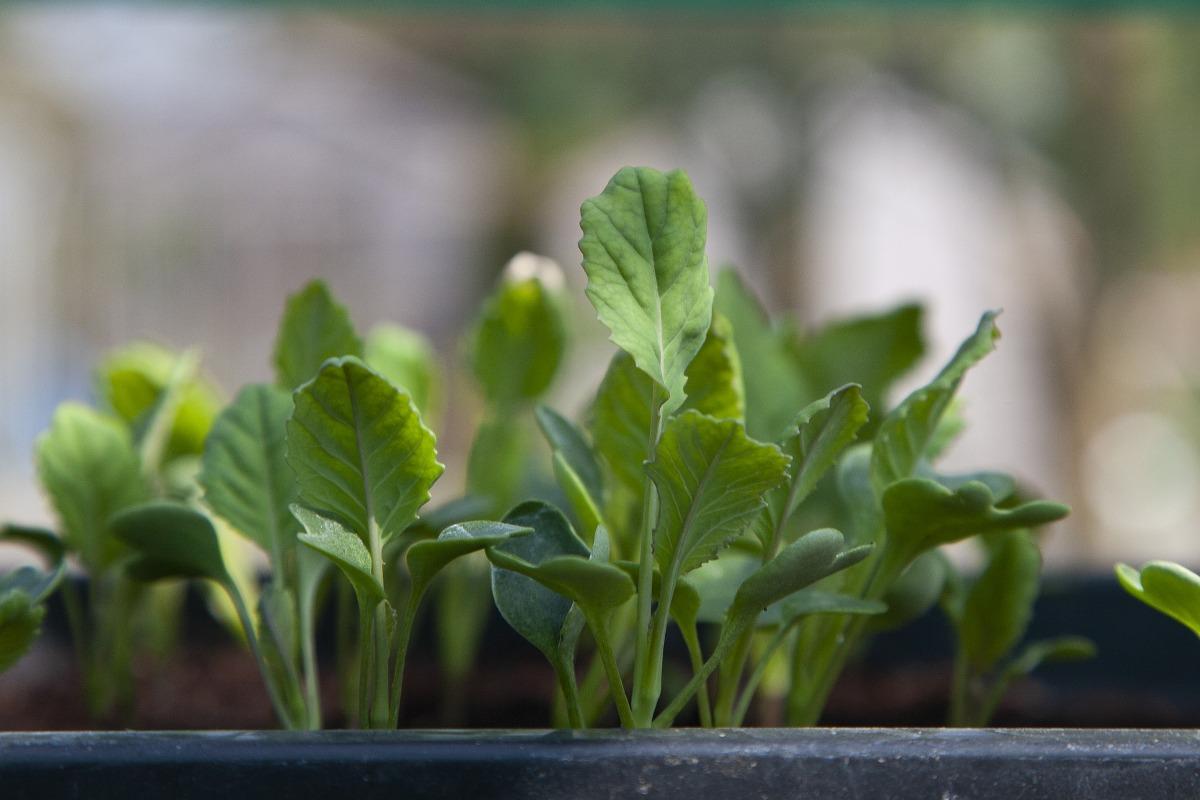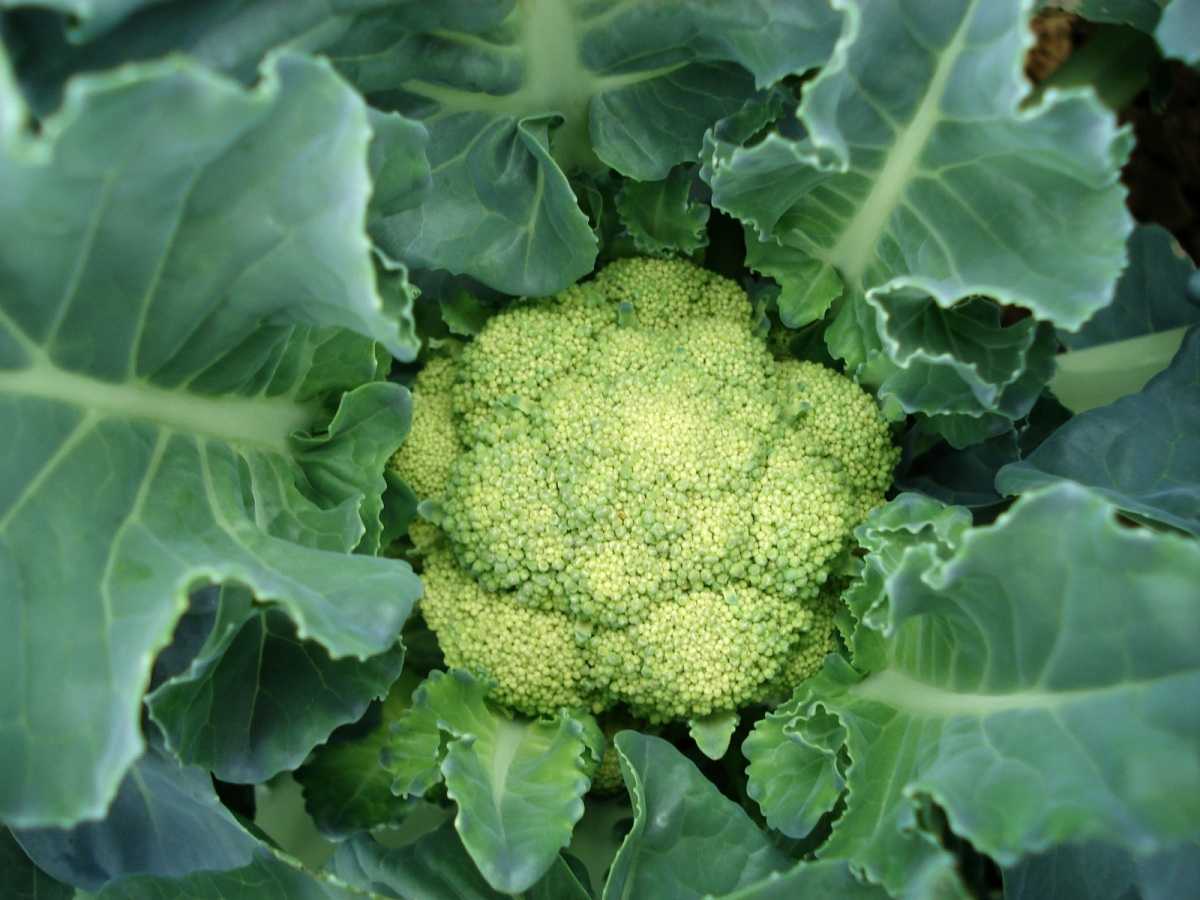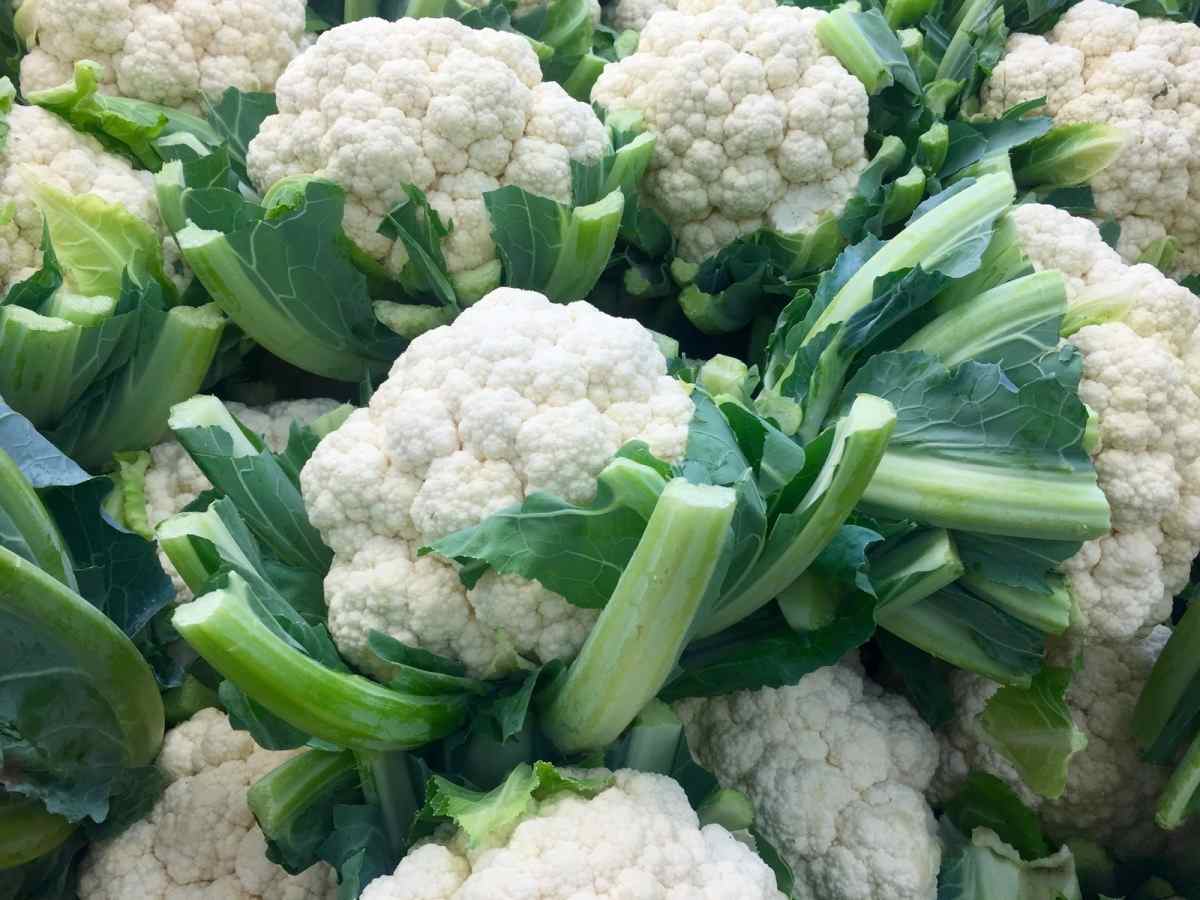Introduction to an organic Cauliflower cultivation
Cauliflower is one of the important winter vegetables grow in India. Cauliflower is a cool-season crop and grows best in well-draining, organic soil at a pH level of 6.5 or above. A high amount of organic matter in the soil will help to hold moisture and the plant requires consistent cool temperatures. Organic Cauliflower is a fantastic source of vitamin C and fiber. Organic Cauliflower is preferred for superior taste and health benefits.
A step by step guide to the cultivation of an organic Cauliflower
Organic production of brassica crops relies on management techniques that replenish and keep long-term soil fertility by optimizing the soil’s biological activity. Then, this is achieved through crop rotation, cover cropping, composting, and by using organically accepted fertilizer products that feed the soil while providing plants with nutrients. Besides producing high-quality plants, healthy, well-balanced soil can help plants develop natural resistance to insect pests and diseases.
Provide rich organic soil for Cauliflower
In addition to being picky about temperature and the sun, the plant is particular about the type of soil the vegetable plant requires. Cauliflower plants are heavy feeders, therefore, the soil needs to be fertile, well-drained, and moist with plenty of rich organic matter. The recommended pH level is 6.5 for the best growth possible. Soil needs to be very rich in organic matter; mix aged manure and compost into the bed. Cauliflower also needs extra nutrients and apply 5-10-10 fertilizer.

Soil components such as minerals, air, water, and organic matter vary widely depending on geography and climate. The challenge on farmland is to keep healthy soils with adequate levels of organic matter. Organic matter in the soil component mainly responsible for these traits. Organic matter is broken down by soil organisms, creating humus. Humus in turn provides nutrients to crop plants and sustainable soil management maintains soil health and productivity by taking care of and increasing the soil’s organic matter. Organic sources of supplemental nitrogen such as guano, pelleted compost, fish emulsion, blood meal, cottonseed meal, alfalfa meal and they must be applied as soon as the plants are strong enough usually 6 inches tall to withstand the side-dressing operation.
Preparing the site for organic Cauliflower cultivation
Prepare your soil well for Cauliflower crops. Mix a well-rotted compost and dry organic fertilizer in the soil when you prepare beds. Mix dry fertilizer of 1 part blood meal, 2 parts bone meal and 1/2 part greensand or azomite, or just use a complete organic fertilizer for vegetables.
Raise seedlings in nursery beds or plastic trays. Treat seeds with asafoetida by 5mg/L of water and then sow in well-composted nursery beds or trays. Raise nursery beds about 0.8 m wide, 15 cm high, and of convenient length. Add 50 kg good quality compost with about 1 kg neem cake which has been previously soaked in 2 liters of water, and 100 gms of Trichoderma. Moisten and set aside for about 3 days. Then fill trays with this mixture and then place seeds on it. After sowing drench with 3 % Trichoderma or Pseudomonas solution. Repeat spray at 15 days to prevent post-emergence damping off. Water seedlings regularly both before and after germination as water stress checks plant growth. Withhold watering 2 to 4 days before transplanting to harden seedlings. Prepare ridges and furrows in the main field along with the recommended manure dose.
Prepare soil first with compost or manure and mix into the top layer only (roughly the uppermost 6 inches of soil). Cauliflower crop is a heavy feeder and requires a good amount of nitrogen. Adding a nitrogen-rich organic fertilizer at this point will benefit Cauliflower crop down the road.
When and where you should grow Cauliflower
When choosing the perfect spot for Cauliflower crop, remember that this is an especially temperature- and moisture-sensitive vegetable. Cauliflower requires full sun for at least 6 hours each day. However, it must not get too hot. At the same time, extended periods of cold will negatively affect the growth of the Cauliflower curds. Cauliflower crops that are exposed to temperatures over 26°C generally struggle with growth and have undesirable texture.
In case if you miss this: Fish Farming Profit Per Acre in India.

Due to its need to avoid the heat, the Cauliflower crop is a cool-season crop. We recommend planting Cauliflower in the fall and avoid planting in the spring unless you are located in a region with reliably cool summers. In addition to its precise temperature requirements, Cauliflower plants, like nearly all vegetables, need soil with adequate drainage to prevent root rot. When planning a garden, be sure to pick an area that has good natural drainage, or build a “raised bed”. Cauliflower is one vegetable that will perform quite well in a raised bed, and you find that the elevated bed better assists you in controlling the size of your crops, and the quality of your soil.
Seed rate and seed treatment in organic Cauliflower cultivation
The seed rate of Cauliflower will be 200-500g/hectare are required. About 1 gm seed gives about 100 seedlings. Seedlings are ready for transplanting in 4 to 6 weeks from sowing. Treat seeds first with Trichoderma 4gm/Kg of seeds the night before planting and dry in shade.
The seed sowing procedure in organic Cauliflower cultivation
Sow the seeds in protrays by 1 seed per cell. Cover the seeds with coco peat, keep the tray one over the other and cover with polythene sheet for 5 days or till germination starts. After 5 days when the Cauliflower seeds are germinated, arrange the protrays on the raised beds inside the shade net nursery. Water the tray by rose can everyday (twice / day) and drench with 19:19:19 + MN (manganese) by 0.5 % solution using rose can or spray micronutrient at 0.5 % 18 days after sowing. The Cauliflower seedlings are ready for transplanting in 25 days.
Cauliflower plant spacing
Growers plant Cauliflowers in single or twin rows. For single rows, they keep 20 to 40cm distance between plants on the row and 40 to 90cm distance between rows. For twin rows, they keep 1metre distance between one couple of rows from another and 30 cm between individuals in a couple of plants. Plants are placed again in distances of 20-40 cm on the rows.
Water Management for an organic Cauliflower cultivation
First irrigation is given just after transplanting and further irrigation will depend upon weather, soil type, and variety. Though, regular maintenance of optimum moisture supply is essential during both growth and curd development stage. In areas having rainfall, the planting is done on ridges, furrow irrigation must be given.
For success with Cauliflowers, they require a good supply of water and nutrient. Also, they require consistent cool weather when the heads are forming. Then, prepare the soil with plenty of organic compost, manure, and organic fertilizer as this will ensure an adequate supply of nutrients throughout the growing season.
Organic fertilizers for Cauliflower cultivation
Organic fertilizers will help Cauliflowers grow to the best potential as it does other Brassicas. The pure white color of Cauliflower that you are used to seeing is achieved by blanching and covering the head to shut out light that would otherwise turn the flower buds (called curds) to green. Blanching preserves the Cauliflower’s delicate flavor. There are “self-blanching” varieties of Cauliflower, which have tall plant leaves to shade the curd. Although most Cauliflower is white, there are purple varieties that do not have to be blanched and are recommended for home gardeners. These purple Cauliflowers turn green color when they are cooked and have a similar taste to their relative, broccoli.
To make a robust organic fertility management plan, develop a plan for estimating the number of nutrients that will be released from soil organic matter, cover crops, compost, and manure. As these practices are integrated into field and farm management, the goal is to support diverse microbial communities that will help release essential nutrients from the organic matter additions.
Treatment of organic fertilizer alone or in combination with mineral fertilizers showed better growth and yield of Cauliflower crop. Then, this is due to the improvement of the planting media quality, availability of nutrients for plants, and the improvement of the physical and biological properties of the soil media. The availability of nutrients in the soil which was influenced by improvement biological properties were influencing the growth and development of roots. Improvement of soil structures such as larger soil pores due to the application of organic fertilizers will enhance root development and the ability of the plant roots to absorb water and nutrients.
Organic compost fertilizers from manure and trailing-daisy weeds enhanced the availability of phosphorus and potassium in addition to elements of mineral fertilizers. Fertilization at the age of 20 and 30 days after planting will supply the adequacy and availability of nutrients for plant growth and development of Cauliflower and curd formation.
You may also check this: Tilapia Fish Farming in Aquaponics.
Organic integrated pest management for Cauliflower cultivation
Integrated Pest Management (IPM) is a broad ecological approach to pest management using a variety of pest control methods that target the entire pest complex of a crop ecosystem. Integrated management of pests in Cauliflower crops ensures high-quality agricultural production in a sustainable, environmentally safe, and economically sound manner. The complex interactions of this biological community are known as the soil food web and the soil ecosystem is composed of bacteria, fungi, protozoa, nematodes, algae, arthropods (insects and mites), and large soil-dwelling mammals such as moles, ground squirrels, and gophers. The photosynthesizes or primary producers in this system use the sun’s energy to convert atmospheric carbon into sugars and other organisms feed off these primary producers. Dead organisms and byproducts decompose, becoming the soil’s organic matter that stores nutrients and energy. Cauliflower plants use these nutrients, preventing them from accumulating in soil and water. The life cycle of all these organisms improves the condition of soils by enhancing structure, water infiltration and water-holding capacity, and soil aeration. Then, this results in healthy plants that are more productive and resistant to pests.
Organic production focuses on cultural, biological, and mechanical methods to manage pests on the farm, but in some cases, pesticides, which include repellents, allowed for organic production are needed.
Cauliflower pests and diseases with organic control methods
Aphids and cabbage worms
Aphids and cabbage worms love both Cauliflowers. Monitor plants for both these pests for early control. Curling wilting plant leaves are a sign of aphids and chewed holes are a sign of cabbage worms.
How to Get Rid of Aphids
- For mild infestation try spraying cold water on the leaves, sometimes all aphids need is a blast of water to dislodge them.
- If temperature levels are not too high, spray with insecticidal soap or horticultural oil.
- You can get rid of aphids by wiping or spraying the leaves of the plant with a mild solution of water and a few drops of Ivory dish soap.
- Remove badly infected leaves
- Use Neem oil for aphids and Spinosad for caterpillars.
Diamond black moth
Larvae damage leaves by feeding underside near veins. This leads to leaves having windows or holes on them.
Control
- Use of natural enemies such as Cotesia plutella and Diadegma semiclausum that can be released repeatedly and allowed to establish. They are larval parasites of DBM (diamondback moth).
- Use of NSKE (Neem Seed Kernal Extract) sprays by 3-5ml per liter of water is also effective against DBM at weekly intervals.
- Trap cropping with Mustard and Marigold. One row of mustard for every 15 rows of Cauliflower
- Spray BT var kurstaki by 200 ml per liter per hectare at 12-15 day interval based on pest population levels
Disease management in Organic Cauliflower farming
In organic farming, cultural practices form the basis of a disease management program. Promote plant health by maintaining a biologically active, well-structured, well-drained, and aerated soil that supplies the requisite amount and balance of nutrients. Select varieties resistant to important diseases whenever possible. Plant only clean, vigorous and pathogen-free seed or transplants and keep the best growing conditions possible. Rotation is a very important management practice for pathogens that overwinter in soil or crop debris. Rotating between crop families is helpful for many diseases, but could not be effective for pathogens with a wide host range, such as Sclerotinia causing white mold and Rhizoctonia. Rotation with a grain crop, preferably a crop or crops that will be in place for one or more seasons, deprives many disease-causing organisms of a host and contributes to a healthy soil structure that promotes vigorous growth in plants.
Curd rot
Rotting takes place on any portion of the curd and curds are rendered unmarketable leading to a total loss.
Control
- Spray with Pseudomonas or Trichoderma by 5ml per liter of water.
- Rotate crops
- Give hot water seed treatment
- Use disease-free seeds or use resistant cultivars
- Remove and dispose of infected plants. Burn infected plant tissues when possible.
- Clean contaminated equipment
- Avoid working when plants are wet
- Mint extract
Black rot
Disease infection takes place form points of insect attack and yellowing of tissue leads to chlorosis forming V-shaped lesions with the base towards the midrib.
Control
- Rotate with non-cruciferous crops
- Use resistant cultivars.
- Avoid over wetting of fields
- Treat seeds with tap water for 30 min followed by hot water at 52°C for 30 min.
- Spray with Pseudomonas or Trichoderma by 5ml per liter of water
Damping-off
Infection occurs at the base of the stem. Then, tissues become water-soaked leading to rotting and collapse of the seedling. It occurs at the pre-emergence and post-emergence stage. This is the main cause of mortality in seedlings.
Control
- Use of fungicidal compost teas as foliar sprays.
- Spray Trichoderma or Psuedomonas by 3-5g/l.
- Add VAM 2.5-3 g/l and drench in soil.
- Prepare raised beds and maintain appropriate tilth and avoid waterlogging,
Harvesting procedure of Cauliflower

Cauliflower crop is ready for harvest 90 to 120 days after planting. The full white-colored matured Cauliflower must be a harvest for sale immediately. If the harvesting is delayed, then the color of the curds is becoming yellowish, and thickness and charm disappear. Therefore it is important to remove the Cauliflower at the right maturity time. Cut stalk below to the curd by using a knife. Grading must be made according to the color and size and market demand. Normal temperature Cauliflower can be stored for 3 to 4 days with 85 to 90% humidity in 30 days.
In case if you are interested in How to Make Money from Organic Farming Business.